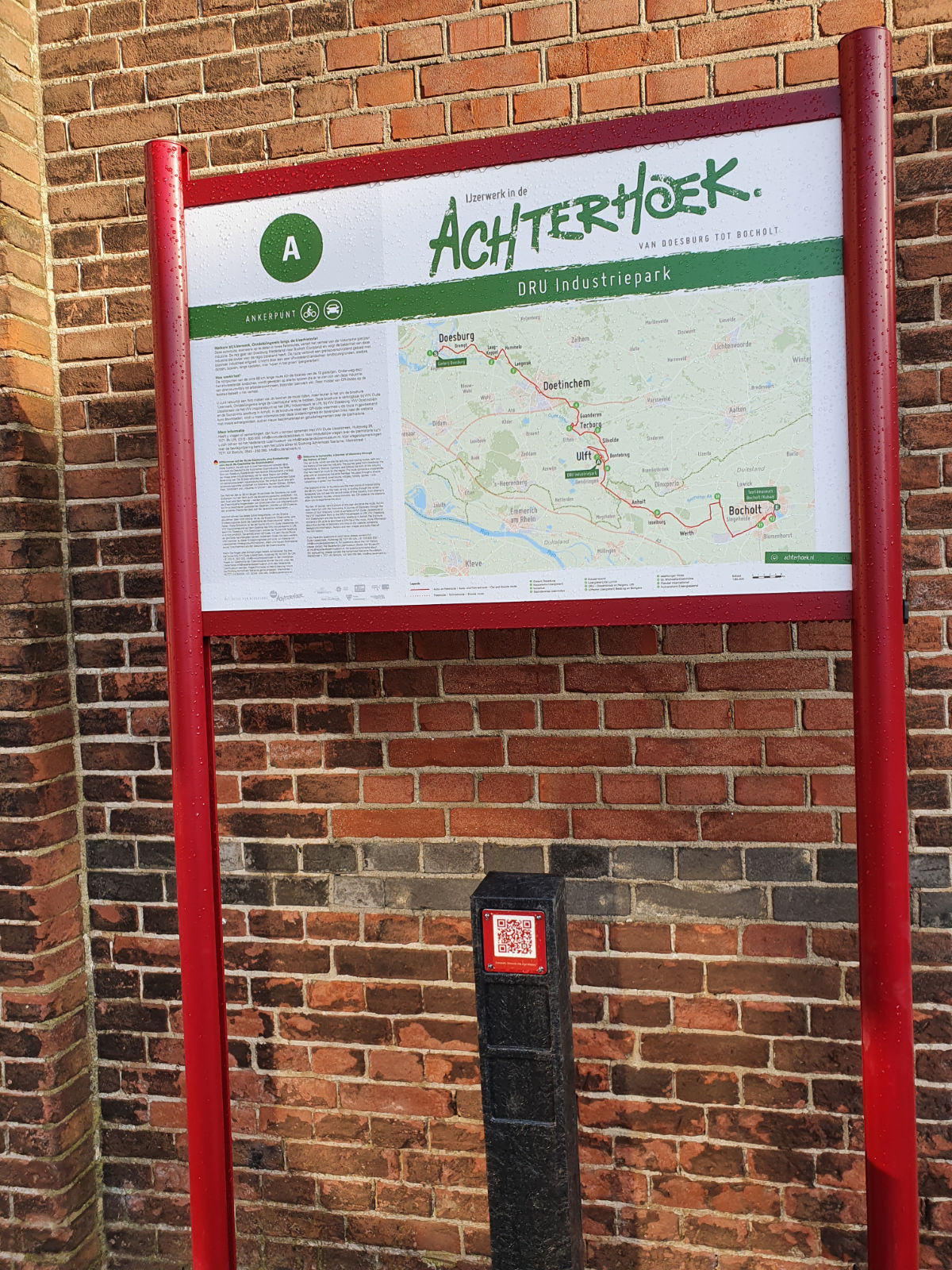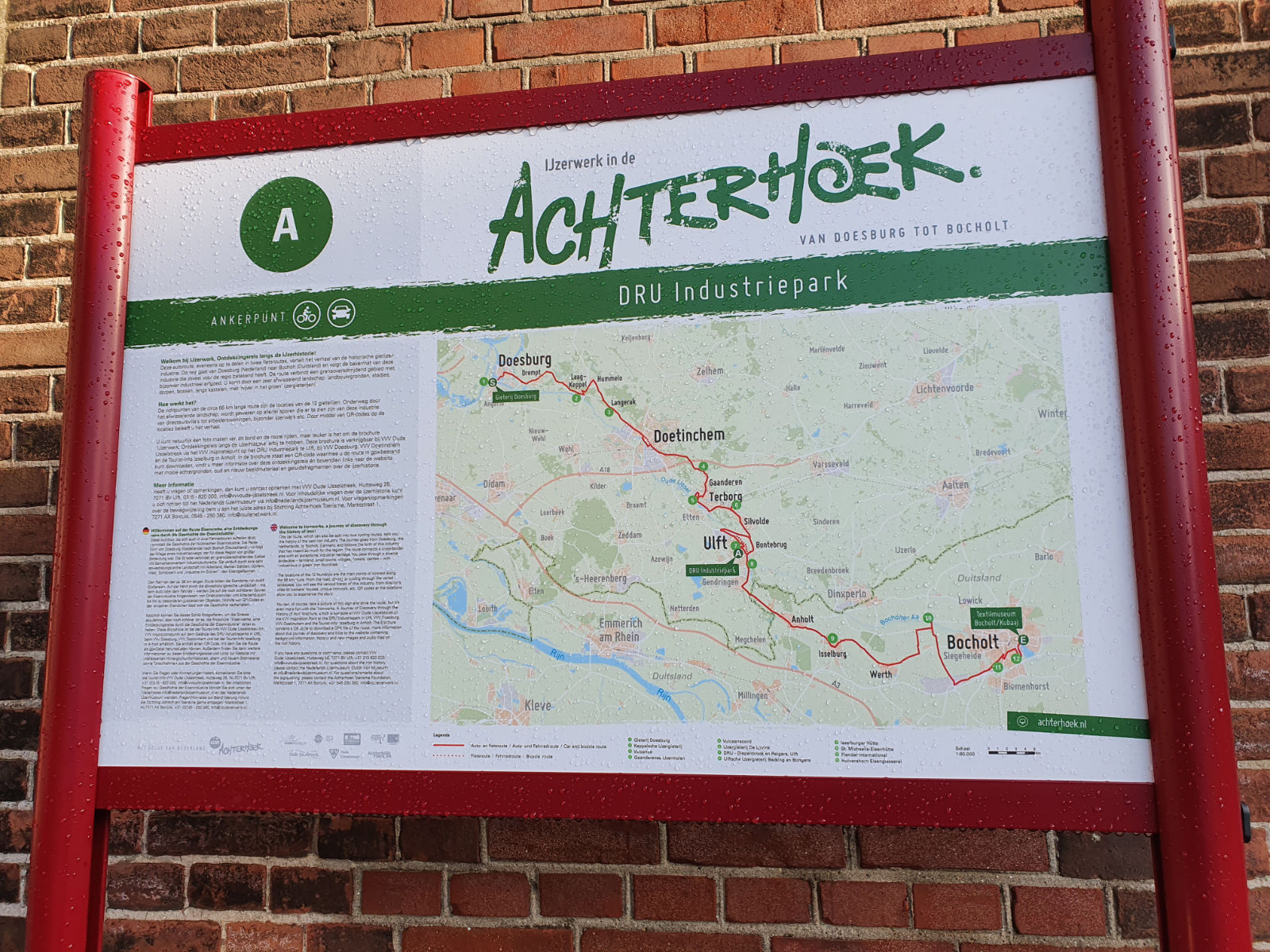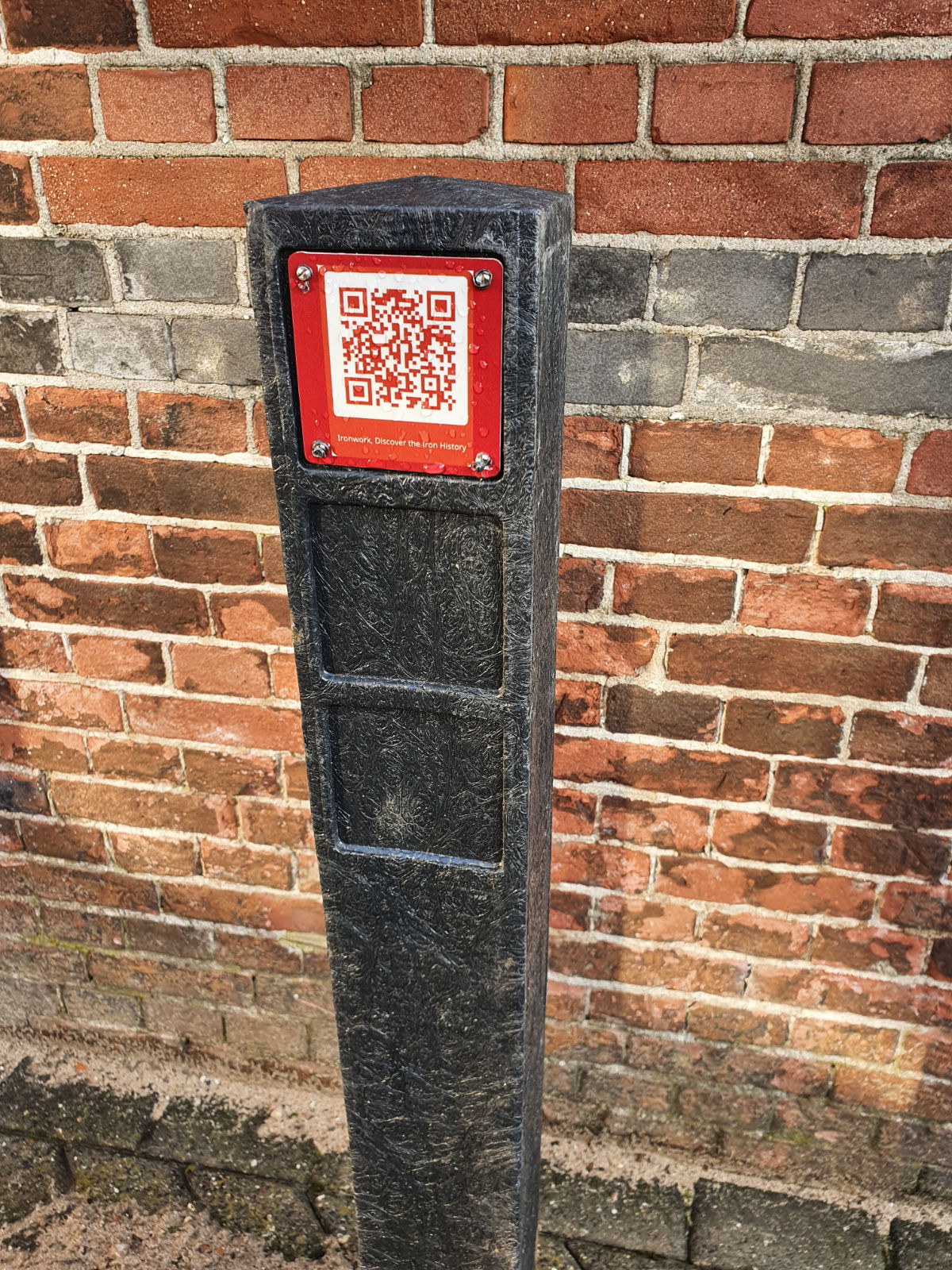- Home
- Route Ironwork
- discovertheironhistory
IRONWORK
EXPLORE THE IRON HISTORY BY CAR OR BICYCLE
Ironwork, A Journey of Discovery Through the History of Iron tells the story of the historical iron industry. The journey goes from Doesburg, the Netherlands, to Bocholt, Germany, and follows the birth of this industry that has meant so much for the region. The route connects a cross-border area with exceptional industrial heritage. You pass through a diverse landscape—farmland, small towns, villages, forests and castles—with 'industrious in green' iron foundries! The route can be done in a day by car; by bike, we recommend a mid-way overnight stay at the DRU Industriepark, for example.
History
From the end of the 17th century onwards, an exceptional industry developed in the region of the Oude IJssel and its tributary the Aa in Gelderland and the neighbouring Münsterland—an industry that still has more than national significance today. The Oude IJssel river and its tributary, the Aa, was ideal for providing water power for the water wheel and the soil in the region was rich in iron ore, making it possible to establish blast furnaces and iron foundries, the first in the Netherlands. The region had 12 iron foundries in total, from Doesburg to Bocholt, the youngest dating from the beginning of the 20th century. The Gelderse part is known as the birthplace of the Dutch cast iron industry. Over time, these iron foundries evolved into an extensive high-tech metal industry.
Growth of the iron industry
Initially, the main products produced in the region included cannonballs, pots and kettles, firebacks, simple stoves and 'toppings' or 'castings', i.e. iron bars as a raw material for other ironworks. The variety of cast iron products later expanded enormously, from inkwells and pottery to grave monuments and pillars, from windows to street wells and all kinds of engine and machine parts. Some of the factories proceeded to process sheet iron (plate steel) or switched to enamelling products.
In the fifties and sixties of the 20th century, at the peak of activity, a total of about five thousand people worked in this iron industry! Then the decline began, partly due to the emergence of foreign competition. Only three of the foundries are still active: Gieterij Doesburg, Vulcanus in Langerak near Doetinchem and the Isselburger Hütte in Germany. Even so, in addition to, and partly due to, the 'old' foundries, new multiform metal industries arose. For example, Exerion (High Precision Technology) in Ulft is a continuation of DRU-IP&S (Industrial Products & Services).
The route
The main points of interest along the 66 km route are the locations of the 12 foundries. Driving or cycling through the varied landscape, you will see traces of the industrial past, from director's villas to workers' houses, unique ironwork, etc. QR codes at the locations allow you to experience the story. You can download a GPX file of the route here.
The route goes from Doesburg to Bocholt. Tip for returning cyclists: cycle along the water, a section of the Bocholter Aa/Aa trunk road, and follow the junctions to get back to Ulft.
The iron foundries
A list of the iron foundries is given below. More detailed information on these historically important locations can be found on the pages about the iron foundries.
1 Gieterij Doesburg
Established in 1894, this foundry produced special cast iron
2 Keppelsche Ijzergieterij
Established in 1794, a small-scale foundry, artisanal, with a water turbine
3 Vulcanus
Established in 1894, it formerly produced cast iron pipes, a.o.
4 Gaanderense IJzermolen
Established in1689, the first Dutch blast furnace/iron foundry
5 Vulcaansoord
Founded in 1821, the last established blast furnace/iron foundry in this region
6 IJzergieterij De Lovink
Established in 1911, until recently one of the most modern foundries in Europe
7 DRU - Diepenbrock en Reigers, Ulft
Established in 1754, historically the longest operating ironwork in the Netherlands
8 Ulftsche IJzergieterij Becking en Bongers
Established in 1895, formerly known for the stoves
9 Isselburger Hütte
Established in 1794, formerly called Minerva-Hütte
10 St. Michaelis-Eisenhütte
Established in 1729, in 1754 it was the model for the Ulftsche Yserhut (DRU)
11 Flender International
Established in 1898, the company was a global player in transmissions
12 Hulvershorn Iron Foundry
Established in 1886, it mainly supplied machines and industry
Eindpunt: Kubaai & Textile museum
Places of interest along the way
In addition to the fascinating iron history, this route has some other places of interest that are worth a visit.
A De Waag
Koepoortstraat 2–4 - Doesburg
B TOP Laag Keppel
Dorpsstraat 30 - Laag Keppel
C Restaurants in the centre Doetinchem
Simonsplein and surrounding area - Doetinchem
D TOP & Restaurant 't Onland
Rekhemseweg 175 - Doetinchem
E Hotel-Restaurant De Roode Leeuw
Sint Jorisplein 14 - Terborg
F DRU Industriepark, Ulft
Hutteweg 24 - Ulft
G Nature and recreation area Engbergen
Bosweg/Engbergseweg - Gendringen
H Schloß Anholt
Schloß 1 - Isselburg
I Bäckerei Lensing Eisenhütte
Sporker Ringstraße 2 - Bocholt
J Kubaai & Textile museum
Industriestraße 1 - Bocholt
K Restaurant Schiffchen, located at the weaving museum Textile museum
Uhlandstrasse 50 - Bocholt
A film about the significance of the iron industry
What impact did the iron industry have on the country, the region and Ulft (the location of Diepenbrock and Reigers, Ulft (DRU), the longest operating ironwork in the Netherlands)? This film explains it briefly (currently only in Dutch and German).
https://www.youtube.com/watch?v=U4iyW-VoGcg
Visual material
For the visual material and the sound clips, we are indebted to: Stan Bouman, DRU Industriepark, Nederlands IJzermuseum, Achterhoek Toerisme, Helga Oldenhave, Marieke Eijsink, Henny Dokter.
Copyright: The Nederlands IJzermuseum [Dutch Iron Museum] Reprinted with permission. All rights reserved.
In addition, we are grateful to:
Nas, D., 2015. IJzer, de geschiedenis van een machtig materiaal [Iron, the history of a powerful material]. Soesterberg: Aspekt.
Smit, J. and Van Straalen, 2007. IJzergieterijen langs de oude IJssel 1689-heden [Iron Foundries along the Oude Ijssel 1689-present]. Utrecht: Van Hooff.
Sorgedrager, B. and Wezel, R., 1988. IJzer aan de Oude IJssel [Iron along the Oude IJssel]. Doetinchem: Starein Inst.
GPX data of Sites
1 IJzergieterij in Doesburg | 52.00958726638723, 6.1319508797073805 |
2 Keppelsche IJzergieterij | 51.99670701178459, 6.218283439146925 |
3 Vulcanus | 51.98459530231704, 6.256471999585686 |
4 Rekhemse IJzermolen: Gaanderense IJzergieterij | 51.944049478789786, 6.342470412970119 |
5 Gedenkplaat Vulcaansoord | 51.92560892593997, 6.339992811042628 |
6 IJzergieterij De Lovink | 51.920087281929526, 6.375194121908696 |
7 DRU - Diepenbrock en Reigers, Ulft | 51.8955140701265, 6.384028282282697 |
8 Ulftsche IJzergieterij Becking en Bongers | 51.88656250273017, 6.386121616169996 |
9 Isselburger Hütte | 51.83729024680634, 6.460343872336507 |
10 St. Michaelis-Eisenhütte | 51.84790865158477, 6.552923268787502 |
11 Flender International | 51.82354143815046, 6.608171238636553 |
12 Hulvershorn Eisengiesserei | 51.8282128395446, 6.628995574655223 |










